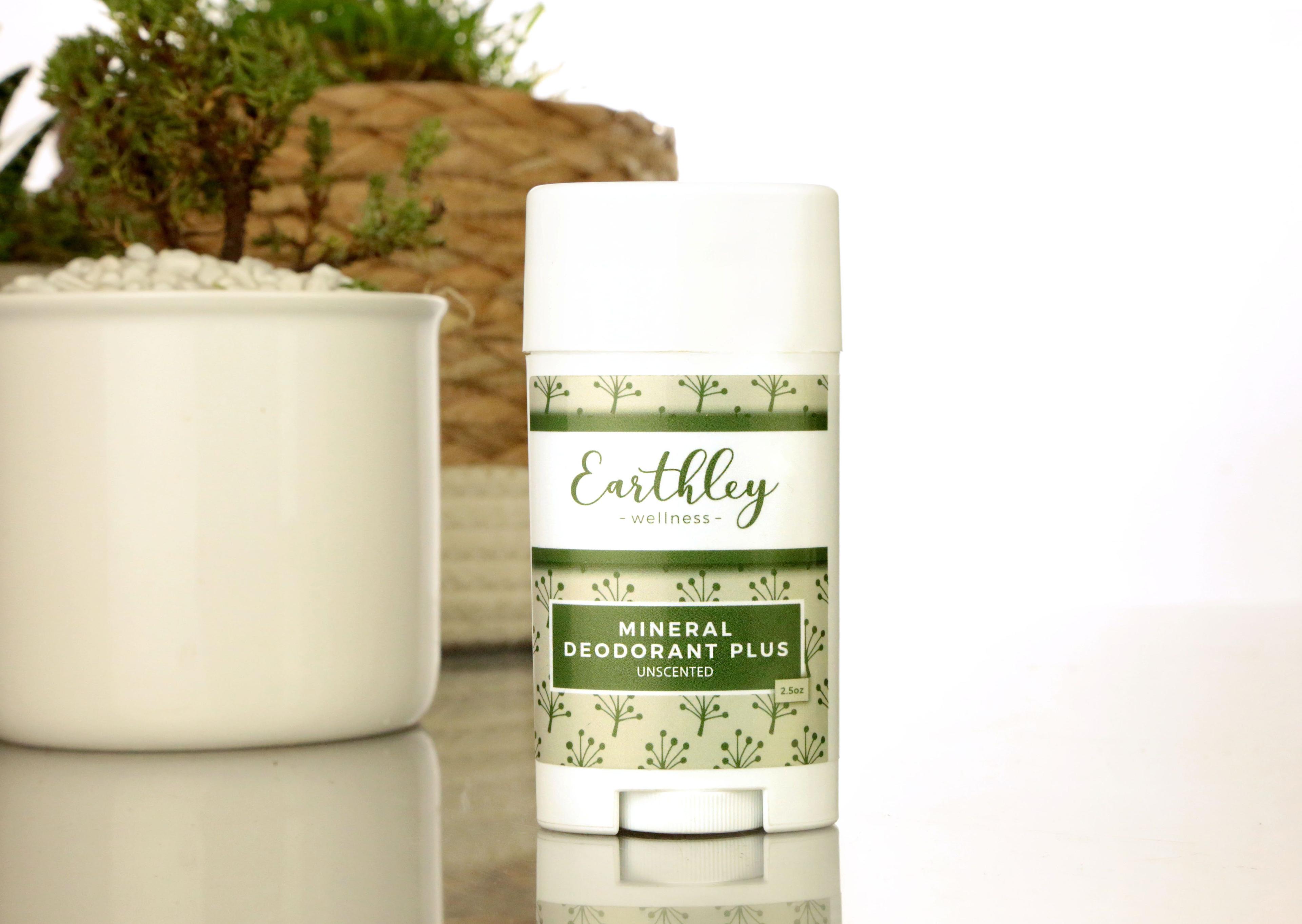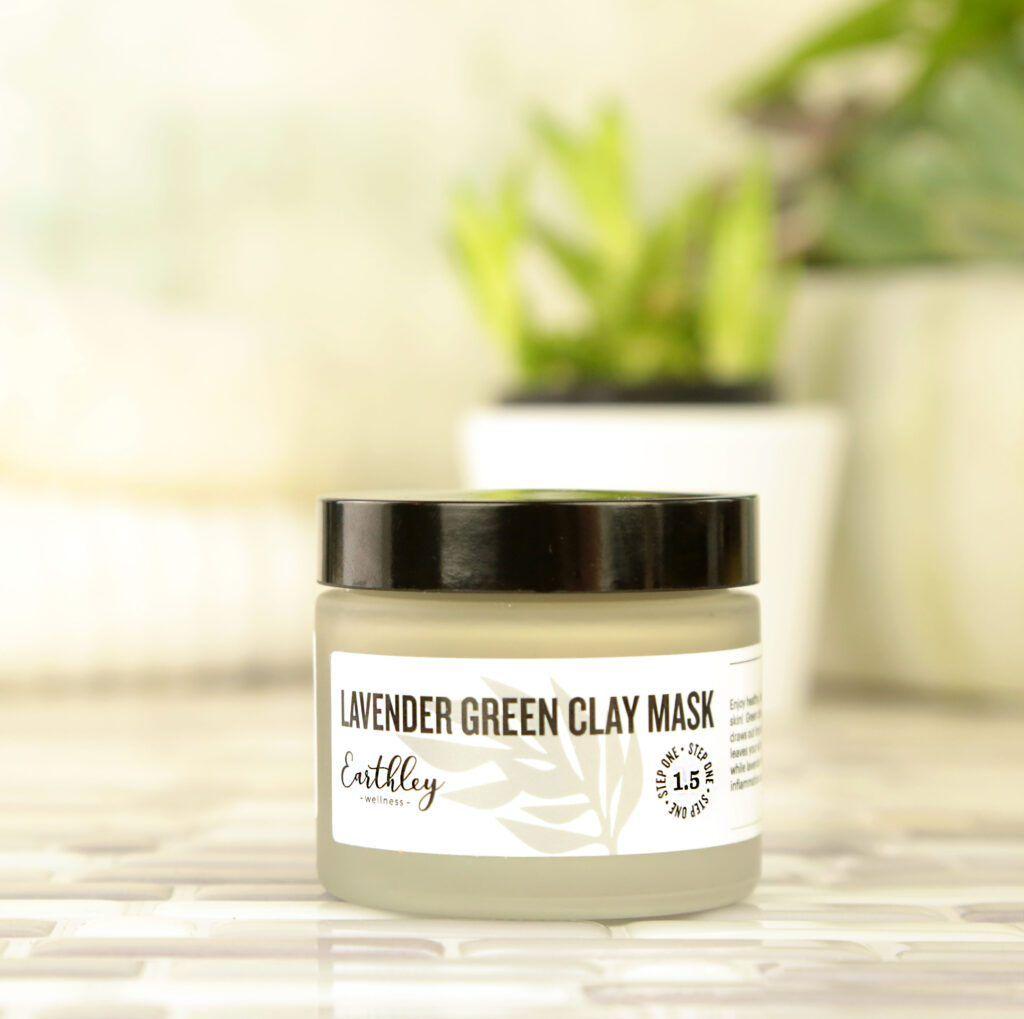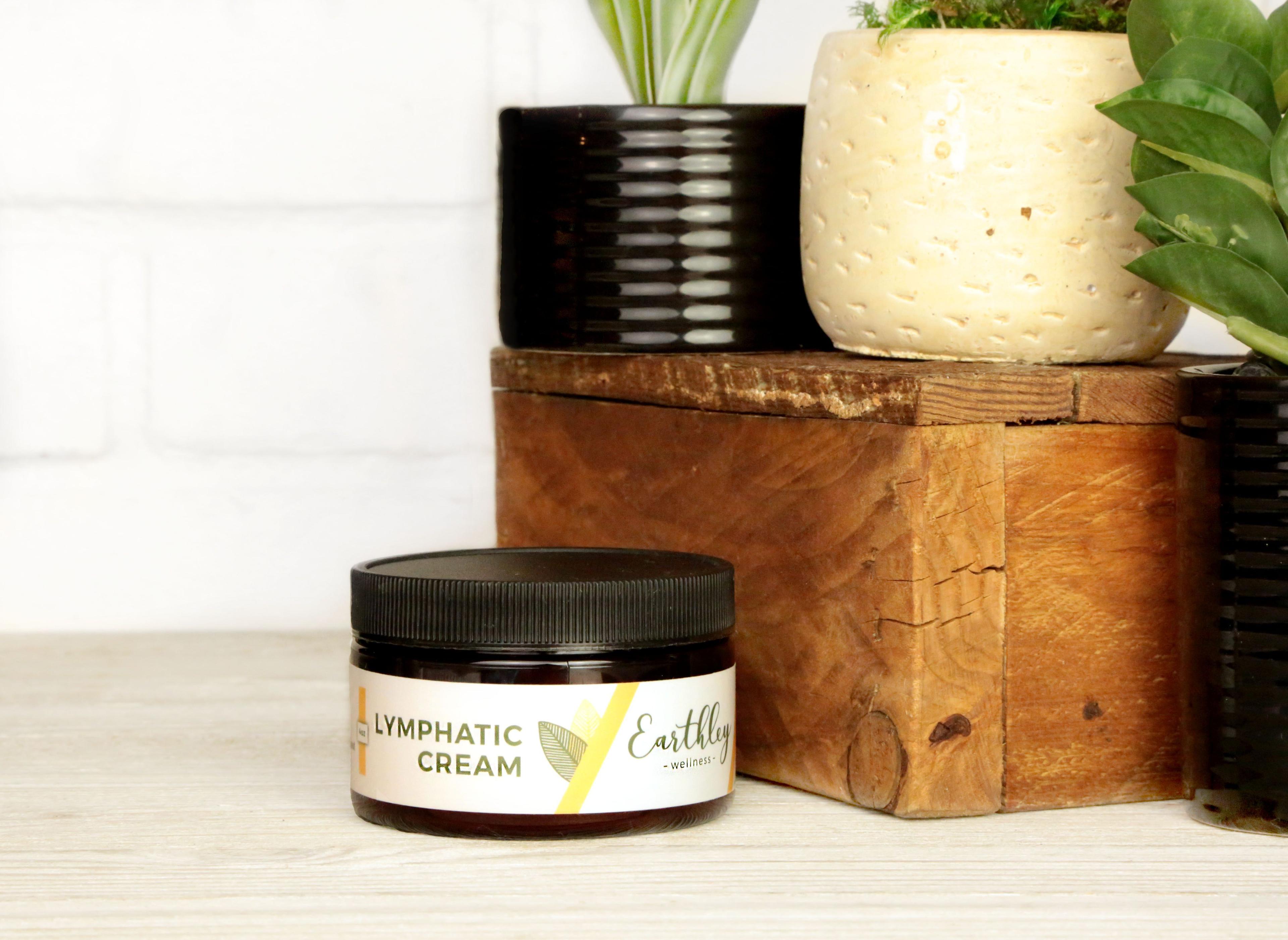What You Need to Know About Deodorant (& a DIY)

We are huge proponents of natural and DIY personal care, partly to be frugal and partly to reduce my exposure to toxins.
Likely, the part of your daily routine of rubbing a semi-solid stick in your underarms could be more concerning than you realize! Over the years, questions have been raised about the safety of using conventional deodorant/antiperspirants. Anything applied and absorbed through your underarms enters your system very close to your axillary lymph nodes.
What Are People Suggesting that Deodorants and Antiperspirants Can Cause?
Perhaps the biggest question has been whether there is a link between antiperspirants and breast cancer. According to Cancer.org, the studies that looked into this were case-controlled studies that asked cancer patients about their usage of deodorants and antiperspirants in the years before diagnosis. Through this questioning, no correlation was found. A few cases suggested concern, but researchers advised that those cases needed further study and interpretation before anyone can conclude these cases are relevant (source).
It has also been observed that there is a high incidence of breast cancer in the upper outer quadrant of the breast, nearest the underarms (source). Some of the tissue even contained aluminum (an ingredient in most antiperspirants). One study showed that 99% of their breast cancer samples contained parabens, a common carcinogenic ingredient in most deodorants and antiperspirants (source).
Let’s talk statistics (source):
- 1 in 8 women in the United States will develop breast cancer.
- In 2021, an estimated 281,550 new cases of invasive breast cancer were estimated to be diagnosed in women.
- 49,290 new cases of non-invasive breast cancer.
All-natural deodorant alternatives have become a hot topic because of these questions and a lack of faith in the answers. So, let’s break down mainstream vs. natural deodorants and look at the alternatives!
What Are Some Ingredients in Mainstream Deodorant?
Let’s examine the ingredients and consider some of the issues to understand why some may be concerned.
Aluminum Chlorohydrate & Aluminum Zirconium Tetrachlorohydrex GLY
Aluminum chlorohydrate (in roll-ons and aerosols) and aluminum zirconium tetrachlorohydrex GLY (in solids) plug the sweat glands, temporarily preventing perspiration. You may like the sound of that; no sweat means no stink, right? Well, no sweat also means no way for your sweat glands to filter toxins from the body during that!
When your body sweats, this is one of the main ways your body detoxes heavy metals, eliminating chemicals and bacteria. Some research suggests that deodorants containing aluminum, which are applied frequently and left on the skin near the breast, may be absorbed by the skin and affect the hormone estrogen (source).
Talc
In its natural form, talc often contains asbestos, a substance known to cause cancers in and around the lungs when inhaled (source). Did you know in 1976, the Cosmetic, Toiletry, and Fragrances Association (CTFA), now known as the Personal Care Products Council, which is the trade association representing the cosmetic and personal care products industry, issued voluntary guidelines stating that all talc used in cosmetic products in the United States should be free from detectable amounts of asbestos according to their standards? This doesn’t mean that asbestos-free talc is safe, though! Studies that exposed lab animals (rats, mice, and hamsters) to asbestos-free talc in various ways have had mixed results, with some showing tumor formation and others not finding any (source).
Petroleum
Petroleum clogs pores and often causes acne breakouts and rashes. Petroleum has also been linked to estrogen dominance. Estrogen dominance is a common condition in which sufferers have a high ratio of estrogen, with little to no progesterone to balance its effects in the body (source).
Caprylyl Glycol
Caprylyl glycol is an alcohol derived from a fatty acid. It is a humectant that pulls water into the skin and helps to hold moisture into the skin. It can irritate some skin types, particularly those already sensitized or irritated (source).
Fragrances
Fragrances are often derived from petrochemicals. These chemicals include benzene derivatives, aldehydes, phthalates, and many other known toxins capable of causing cancer, congenital disabilities, nervous-system disorders, and allergies.
Dimethicone
These silicone-based products will form a barrier on top of your skin – which is why they have studied it for use of wound coverings. It has a great ability to “seal” out concern. That same positive though, means that it can trap dirt, sweat, bacteria, sebum, dead skin cells, and other debris.
What Ingredients Are In Natural Deodorants?
Here are some ingredients from truly natural ingredients to consider.
- Baking Soda (this can irritate sensitive skin or cause irritation over time so be cautious if using this ingredient)
- Bentonite Clay and other clays (ask the supplier about sourcing to know if it has been tested for heavy metals)
- Magnesium Water
- Arrowroot Powder
- Natural Butters and Food-based Oils
- Essential Oils (remember not all EOs are skin safe and need to be significantly diluted to not cause irritation)
Earthley offers two natural mineral deodorants!
Earthley’s Mineral Deodorant is a 100% natural deodorant that actually works! With absolutely no aluminum, baking soda, or artificial ingredients of any kind, you can be confident this Mineral Deodorant is safe and beneficial to your health. This deodorant uses natural magnesium chloride to detox your pits, arrowroot powder to keep you dry, and plant-based oils and butters to gently nourish your sensitive underarm skin.
Ingredient List:
- Organic Mango Butter
- Organic Arrowroot Powder
- Candelilla Wax (Beeswax coming soon!)
- Organic Apricot Oil
- Filtered WaterMagnesium Chloride Flakes
- EOs for different scents (see listings for all the options)
Earthley’s Mineral PLUS Deodorants like Mineral Deodorant, the PLUS version is all-natural with no aluminum, baking soda, or artificial ingredients. This version has added French green clay to provide lymphatic system support while detoxing the skin to help fight the stink!
Ingredient List:
- Organic Mango Butter
- Organic Arrowroot Powder
- Candelilla Wax (Beeswax coming soon!)
- Organic Apricot Oil
- Filtered WaterMagnesium Chloride Flakes
- EOs for different scents (see listings for all the options)
- and French Green Clay
Prefer DIYs? Try this Homemade Natural Clay Deodorant
Ingredients:
- 2 tbsp. coconut oil
- 1 tbsp. shea butter
- 1 tbsp. apricot oil
- 1 tbsp. beeswax
- 3 tbsp. French green clay
- 15 – 20 drops essential oils
Directions:
- In a small saucepan over low heat, combine coconut oil, shea butter, apricot oil, and beeswax.
- When the oils are completely melted, add the clay, 1 tablespoon at a time, stirring after each addition.
- Add the essential oils if you are using them. This is pretty mildly scented; you can use more if you prefer.
- Pour into your jar or container and let it cool and harden completely. If you want it to go faster, let it sit on the counter for 10 minutes to cool and harden slightly (so it won’t spill so easily), then transfer to the freezer for another 10 minutes.
What to Expect When Switching to a Natural Deodorant
One of the most difficult transitions for natural-minded folks is the switch from mainstream to natural deodorant. It’s one thing many people avoid because it’s often trial and error. We have become so accustomed to not sweating and not smelling that we fail to realize not sweating is normal! In some situations, it is even detrimental to our health!
As previously mentioned, the active ingredient in most mainstream deodorants clogs your pores and blocks your ability to sweat. This forces your body to store those chemicals, heavy metals, and other toxins your body would normally eliminate through sweating. Some will detox in other ways, but some will not. You may have a lot of toxins your body needs to get rid of, and it will be a smelly process while detoxing and the microbiome re-establishing itself – yes, even our skin has one!
Here are some tips for making the process less stressful:
#1 Be prepared to take extra showers. If you can’t bring along baby wipes or Earthley’s All Purpose Spray
#2 Detox your armpits. Clay masks like Earthley’s Detoxifying Pit Mask before showering
#3 Take detox baths. Detox baths help the body detox from the harsh chemicals built up from years of mainstream deodorant use. Try Earthley’s Detox Bath
#4 Take high-quality probiotics or consume plenty of fermented foods. When the body sweats, it helps your body balance the good bacteria. You need to support the body in this process, especially if you’ve been blocking the ability to sweat using an antiperspirant. You can even use Earthley’s Prebiotic Mask on your armpits.
#5 Exercising is important when detoxing. Again, it falls back to balancing bacteria and encouraging the body to detox after being discouraged for so long. We want to encourage detoxing and sweating instead of covering up the stink.
#6 Practice dry brushing and lymphatic self-massage. Your armpits are filled with lymph nodes, and as they detox, your lymphatic system may appreciate the support!
#7 Stay hydrated. Hydration is more than just drinking water. Be sure you’re replenishing electrolytes to help get the lymph fluid/waste moving. Try Earthley’s Electrolyte Powder
#8 About shirt stains: Natural oils and butters tend to soak in a bit to clothing in the area. Here is a fantastic use for baking soda! Apply a good amount of baking soda to the buildup to soak up the oils for 24 hours, and then wash as normal. Try using Earthley’s Cleaning Paste for extra cleaning power!
Disclaimer: This post is not intended as medical advice. These statements have not been evaluated by the FDA, and nothing in this post is intended to diagnose, treat, or cure anything. If you have questions, please do your own research or seek advice from a health professional.
Some of our top recommendations:

For freshness (no aluminum or baking soda)

For extra odor-trapping (no aluminum or baking soda)

For pulling toxins out quickly

Draws out impurities and leaves your skin glowing while soothing inflammation and irritation

To support healthy liver function

To hydrate with natural electrolytes during endurance or illness

For clean hands and a clean world

To promote a healthy lymphatic system.

To support liver and lymphatic health
